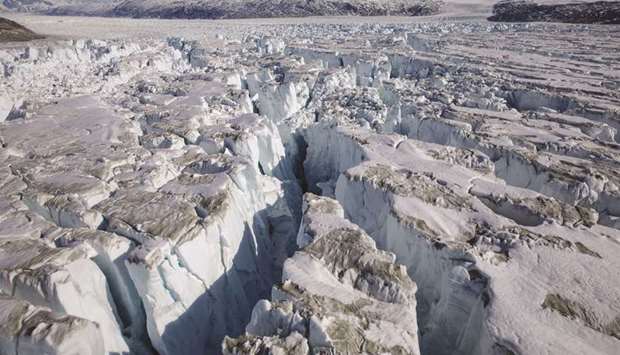A global debt crisis is looming. Even before Covid-19 swept the world, the International Monetary Fund had issued a warning about developing countries’ public debt burdens, noting that half of all lower-income countries were “at high risk of or already in debt distress.” As the economic crisis worsens, these countries are experiencing steep output contractions at the same time that Covid-19 relief and recovery efforts are demanding a massive increase in expenditures.
According to the United Nations Conference on Trade and Development, developing countries’ repayments on their public external debts will cost $2.6-$3.4tn just in 2020 and 2021 alone. Hence, market analysts now suggest that almost 40% of emerging- and frontier-market sovereign external debt could be at risk of default in the next year.
Worse, measures to confront this debt crisis will collide head-on with the global efforts to combat climate change, inequality, and other escalating global crises. We therefore need creative thinking about how to advance multiple objectives at the same time. We must both achieve a strong recovery from the pandemic-induced crisis and mobilise trillions of dollars for the transition to a more financially stable, socially inclusive, low-carbon economy.
In April, G20 finance ministers endorsed a Debt Service Suspension Initiative to suspend debt service temporarily for the world’s poorest countries while they manage the Covid-19 crisis. Unfortunately, few debtor countries have taken up this offer, fearing how it might look to markets and rating agencies. Moreover, private-sector lenders have largely refused to offer meaningful forbearance of their own, thereby undercutting governments’ efforts.
In the absence of new forms of liquidity support and major debt relief, the world economy cannot possibly return to pre-pandemic levels of growth without risking severe climate distress and social unrest. Climate scientists tell us that in order to meet the targets outlined in the Paris climate accord, global net carbon-dioxide emissions must fall by about 45% by 2030, and by 100% by 2050. Given that the effects of climate change are already being felt around the world, countries urgently need to scale up their investments in climate adaptation and mitigation.
But that will not be possible if governments are bogged down in a debt crisis. If anything, debt-service requirements will push countries to pursue export revenues at any cost, including by cutting corners on climate-resilient infrastructure and stepping up their own fossil-fuel use and extraction of resources. This course of events would further depress commodity prices, creating a doom loop for producer countries.
In light of these concerns, the G20 has called on the IMF “to explore additional tools that could serve its members’ needs as the crisis evolves, drawing on relevant experiences from previous crises.” One such tool that should be considered is a “debt-for-climate swap” facility. In the 1980s and 1990s, developing countries and their creditors engaged in “debt-for-nature swaps,” whereby debt relief was linked to investments in reforestation, biodiversity, and protections for indigenous people.
This concept should now be expanded to include people-centred investments that address both climate change and inequality. Developing countries will need additional resources if they are to have any chance of leaving fossil fuels in the ground, investing sufficiently in climate adaptation, and creating opportunities for twenty-first-century jobs. One source for such resources is debt relief conditioned on such investments.
A policy tool of this type would not only put us on the path to recovery, but also could help to prevent future debt-sustainability problems that might emerge as more fossil-fuel holdings and non-resilient infrastructure become “stranded assets.” Moreover, the dramatic decline in the cost of renewable energy represents an opportunity for a big investment push in zero-carbon energy infrastructure, which itself would help to redress energy poverty and unsustainable growth.
Some economists estimate that putting the world economy on the trajectory needed to limit global warming to 1.5ºC would generate about 150 million jobs worldwide. At the same time, the UN Environment Programme’s Production Gap Report has shown that current production plans would push atmospheric emissions far past the limit of what is sustainable. To meet the goals of the Paris climate agreement, then, more than 80% of all proven fossil-fuel reserves will have to remain in the ground.
Given the realities of the climate crisis, it would be foolish to include high-risk investments in fossil-fuel extraction and infrastructure as a part of any recovery strategy. Fortunately, with debt-for-climate swaps, we could actively drive the transition to a lower-carbon economy while also stabilising commodity prices and providing fiscal space for developing countries to invest in resilience and sustainable development.
There is no question that many countries will need debt relief in order to respond effectively to the Covid-19 crisis, and then to climate-proof their economies in a socially inclusive way. For many people in the countries that are most vulnerable to climate change, coming up with the resources for such investments is a matter of survival.
The G20 has called on the IMF to develop new tools and strategies to present at its summits this fall. An ambitious global arrangement to swap debts for climate action and social equity should be placed at the top of the agenda. – Project Syndicate
*Shamshad Akhtar, a former governor of the State Bank of Pakistan, is Chair of the Board of Directors of Karandaaz Pakistan.
*Kevin P Gallagher is Professor of Global Development Policy and Director of the Global Development Policy Centre at Boston University.
*Stephany Griffith-Jones is Financial Markets Programme Director at the Initiative for Policy Dialogue at Columbia University.
*Jörg Haas is Head of International Politics at the Heinrich Böll Foundation. Ulrich Volz, Senior Research Fellow at the German Development Institute, is Director of the SOAS Centre for Sustainable Finance and Reader in Economics at the SOAS University of London.

FILE PHOTO: Crevasses form on top of the Helheim glacier near Tasiilaq, Greenland, June 19, 2018. Given that the effects of climate change are already being felt around the world, countries urgently need to scale up their investments in climate adaptation and mitigation.
